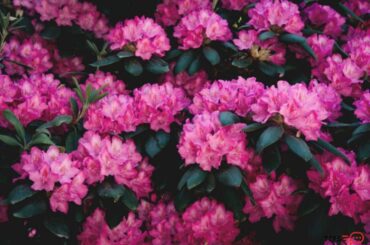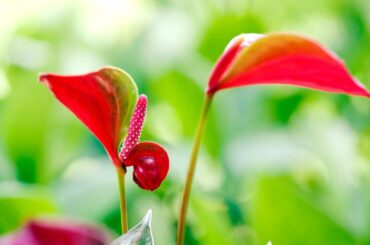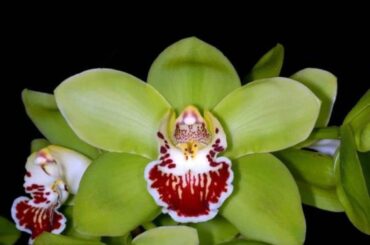Why do anthurium flowers turn yellow? We are actually talking about yellowing of spathe of the anthurium plant. Most of the time ‘spathes’ or brightly colored leaves are known as flowers that attract insects in the wild. The flower is actually the central ‘spadix’, made up of lots of tiny flowers.
But in this article we are not going to talk about that tiny flowers. We are going to talk about the discoloration of ‘spathe’. Hereon if I say flowers that mean I am talking about spathe the glorified leaves.

Discoloration of flowers is one of the most typical issues that anthurium plant parents confront. It will be really irritating to see a dull-colored flower on your lovely anthurium plant instead of a scarlet dazzling red anthurium.
This article is for the anthurium enthusiasts who want to learn more about the reasons and solutions for anthurium flower discolorations. Anthuriums are well known for their enchanting, heart-shaped, radiant, and vivid blooms. Thanks to the long-lasting magnificent flowers, these tropical beauties are one of the mandatory features in any houseplant collection.
Why do anthurium flowers turn yellow?
Perhaps you may have experienced changing your anthurium flowers to yellow. Why is this happening? Well, the shortest answer is anthuriums turn yellow as a response to stress.
Turning flowers to yellow is a sign of poor quality soil, exposure to harsh direct sunlight, overwatering, improper fertilization, arid ambient conditions, or inappropriate temperature in the plant’s environment. Other than the environmental factors, the aging of the plant causes flowers to fade to yellow.
01. Too much sun exposure
When the anthurium plant is exposed to the strong sun, it is possible to develop a yellow tinge in flowers. If you leave the plant unattended in strong direct sunlight for longer, the situation becomes worse. You will see burn marks and brown spots on flowers unless you make any corrective actions.
Yes, sunlight is necessary for anthuriums to grow healthy and bloom stunning flowers, but too much sun is harmful to them. Remember that anthuriums prefer bright, indirect light. In rainforests, anthuriums grow on trees under a dense canopy of leaves.
Sunlight reaches anthuriums after filtering through the canopy. Therefore, the plants get no harm from the sun. Once you grow anthuriums in your home, you should never unveil them to direct sunlight unless you want to damage the plants.
If you notice a yellow tinge on your indoor anthuriums, move them at least one meter away from the sunny window. The use of sheer curtains to filter the sun’s rays is a good idea to protect your plant. When selecting a place for your anthurium pot, be mindful to skip southern or western facing windows, especially during the summer and spring, so your plants won’t bathe in too much direct sunlight.
02. Overwatering anthuriums
Turning anthuriums to yellow is unavoidable if you overwater your plants. Though anthuriums love to root in moist but not in sopping soil. Waterlogged soil impairs the roots’ ability to absorb nutrients and exchange gas, and thereby interferes with the formation of color pigments of the flowers. Daily watering of anthuriums is unnecessary
. During moist and cold climates, anthuriums’ growth is slow; thus, probably they may need less water. But in dry and warm climates they need more water. Likewise, try to understand the timely water requirement of the plant. It is crucial to water plants when they need it.
If you are not sure about when to water your anthuriums, you can get an idea by checking the wetness in the soil with your fingers. If you feel the soil 1 to 2 inches in depth is dry and crumbly, you probably should water your plant, but if it is wet, you are not supposed to water the plant.
03. Too much or too little fertilizer for anthuriums
Fertilizers are vital for healthy growth and development but, you have to ensure that fertilizing the plants in sufficient amounts. Too much, as well as too less fertilizers for anthuriums, can be detrimental to the plant. Flowers will give the signs of yellowing in response to the lack of nutrients for the plant.
If you do not treat your anthuriums with a proper diet, the plants will be unable to fulfill their nutritional needs, which will hinder the optimal performance of the plant. Further, if you over fertilize your anthuriums, there will be a risk of accumulating the nutrient elements in plant tissues in excessive concentrations that can impart toxic effects and result in turning the flowers yellow.
Water soluble liquid fertilizers for anthuriums need frequent applications. They are quickly degraded in the soil and absorbed by the plant. Most gardeners practice the application of fast-release fertilizer once per month. Typically, granular-type fertilizers are slow-release fertilizers that are capable of replenishing nutrient levels in the soil over a period of time.
Therefore, you don’t need to apply them frequently as liquid fertilizers. The nutrient requirements of indoor plants are quite less than those of outdoor ones. So, it is advisable to use 1/4 of the recommended dose of fertilizer for your indoor anthurium plants.
04. Arid ambient environment
If you can remember, anthuriums are native to rainforests. There, they grow in a well-moisturized environment. Anthuriums crave high humidity levels in their surroundings. If you fail to provide such moist conditions for your plants, you will experience yellowing of flowers.
You can simply increase the humidity levels around the plant by misting or keeping the plant in a humidity tray.
Also, you can place your anthurium pot in the bathroom to provide a moist environment for the plant. Due to high environmental temperature during warm seasons (summer and spring), plants will lose much water via transpiration. In the case of winter, the environment can be dry. This means that you should attentively increase the humidity levels in the environment to keep your plant happy and healthy.
05. Inappropriate temperature
Temperature also influences anthurium blooms to turn yellow. Anthuriums need a warm environment to thrive. In general, the best performance of anthuriums can be seen at temperatures between 20 and 30 oC. The plant’s growth and development are disrupted by both cooler and warmer temperatures.
In fact, the extreme temperatures of the environment around the plant will stress the plants, causing them to underperform. For the best performance of your anthuriums, it is important to regulate the indoor air temperature. Do not forget to keep anthuriums away from heating vents and air conditioning units as they disturb the proper temperature around the plant.
06. Poor quality soil
Soil plays a vital role in the plant’s performance. Sometimes, your plant’s status is a good indication of the quality of the soil it is growing in. Anthurium needs loose and coarse soil to grow. This enables proper aeration around the root zone of the anthurium plant.
Dense soil makes aeration harder and obstructs gas exchange. Further, it makes it harder for the plant to absorb nutrients easily. Adding material such as coco coir, pieces of coco husk, and peat moss that can improve the porosity of the growing medium is advisable.
Deficient nutrients in the soil have the potential to cause the yellowing of flowers. To overcome this issue, you can either change the soil or repot the plant. Usually, it is recommended to repot the anthuriums once every two to three years. When transplanting, you can fill the container with new nutrient-dense soil to promote healthy plant growth.
07. Aging
When the plants grow older, they lose the ability to retain the vibrant colors of flowers. On the other hand, with the age of the flower, it is possible to shift the colors of flora to yellow. This is a natural process that happens in the plant’s life cycle, and you may not need to worry about this.

Why is my anthurium flower fading?
Anthuriums can change the color of their blossoms as a result of amiss changes in their surroundings. Besides turning the color into another, sometimes anthuriums wash off their color. As mentioned earlier, fading of flowers often results from environmental stress conditions, mainly due to exposure to direct sunlight, insufficient light, and exposure to warmer temperatures.
When anthuriums grow indoors, they receive plenty of indirect light, but if you place your anthurium pot too close to the window or on the windowsill in a way that it unmasks to the direct sun, fading colors of flowers may not be unusual. Too much sun causes the burning of the color pigments of anthurium flowers. Due to the degradation of color compounds, flowers will lose their vibrant shine, giving them a dull appearance.
So, you should avoid exposing anthuriums to the direct sun if you want to preserve the radiant colors of anthurium flora. Similarly, warmer temperatures (temperatures above 30 oC) also destroy the color pigments giving the flowers a pale look. Fading of colors can be a result of insufficient light in the environment.
Anthuriums are happy to bloom glossy flowers where there is plenty of bright light. Though anthuriums can thrive in low light, they won’t do their best under low light intensities. Make sure that your anthuriums receive enough bright light. If you do so, they will reward you with their beautiful vibrant blooms. Don’t panic. When the anthurium flower passes its peak of development, it may no longer retain its bright color and gradually fade.
What does overwater anthurium look like?
Overwatering is the prime cause of many problems with anthuriums. If there is excess water, anthuriums become stressed, making them more vulnerable to flower is coloration and diseases. Perhaps you may have seen turning anthurium flowers to yellow, green, or brown. This is more common when the plant gets too much water.
Overwatering makes the soil denser. Soppy soil discourages the gas exchange and nutrient uptake that are crucial processes of anthuriums. For these reasons, the plant may be incompetent to gain vital elements required for optimal growth and development.
Therefore, plants will retard their growth and produce fewer flowers. Sometimes, the size of the flowers may be smaller than usual. Further, if you continually exceed the water requirement of the plant, it could lead to microbial invasions that can cause severe damage to your anthuriums. Root rot is a bacterial disease that often resulted from overwatering the plants. Once the plant gets infected, the leaves and flowers turn brown, and eventually, the plant will die.

Should I cut off dead anthurium flowers?
The most straightforward answer is yes, you have to. It would be better if you could remove aged or any form of damaged flowers from your anthurium plant. As a plant parent, it might be a hard decision for you to remove flowers from your beloved plant, but this is necessary to favor the optimum performance of the plant.
Though flowers have passed their peak of development, they suck some amount of energy, but this is in vain. If you could cut off such flowers from your plant, the plant will redirect that energy to produce new flowers and leaves.
How long do anthurium flowers last?
Anthuriums produce long-lasting flowers. When compared with other flowers anthuriums are more durable. A well-flourished anthurium plant can bloom flowers that last for 2 to 3 months. Generally, anthuriums are capable of blooming around every three months. Then the plants will undergo a dormancy period for nearly 3 months to bloom again.
Why are my anthurium flowers not red?
There is no doubt that once we hear the name “anthurium”, we are picturing a heart-shaped, shiny, crimson red flower. However, we often encounter anthurium flowers that are deviated from their inherent red color. What might be the reasons behind that?
Obviously, as discussed earlier, stressful environmental conditions and aging of the plant cause anthuriums to shift their color. Yes, to preserve the red color of your anthuriums it is essential to maintain a proper environment around the plant. However, adverse changes in environmental factors are not the only reason to change the color of anthurium flowers.
If you notice your anthuriums are apparent in a different color other than typical red, the best point to start is checking the variety. Not every anthurium variety produces scarlet red flowers. There are anthuriums that naturally bloom with green, yellow, white, and brown flowers. For an instant, Midori anthuriums produce green color flowers.
To summarize, if you are an anthurium enthusiast, you should keep your eyes on the environment in the plant surrounding. Make sure that the ambient surrounding of the plant is well-matched with the plant’s requirements. Mimicking the native habitat of anthuriums on your anthurium plants is the key to success.
Read Next : Shenzhen Nongke Orchid | Precious Beauty |





